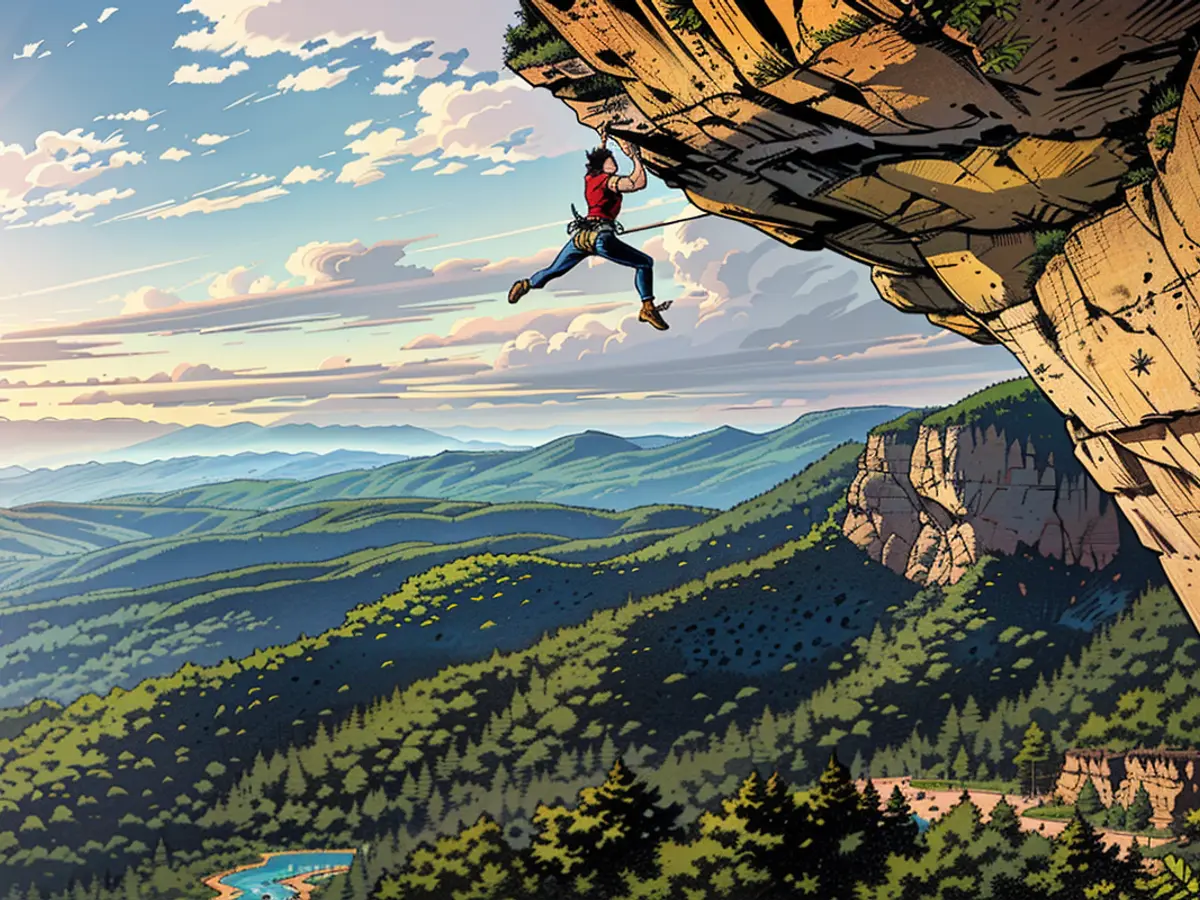The photographer capturing climbers at dizzying heights
He did both. While the rock had been scaled before, the Australian photographer and his friends decided to find a new route — and it paid off. As Carter abseiled around the narrow, imposing sea stack with his camera, he captured the other climbers in action from thrilling vantage points unseen from the ground.
The photographer’s new book, “The Art of Climbing,” features a selection of these images, alongside more than 200 other striking shots of fellow climbers ascending towering and complex rock formations around the world.
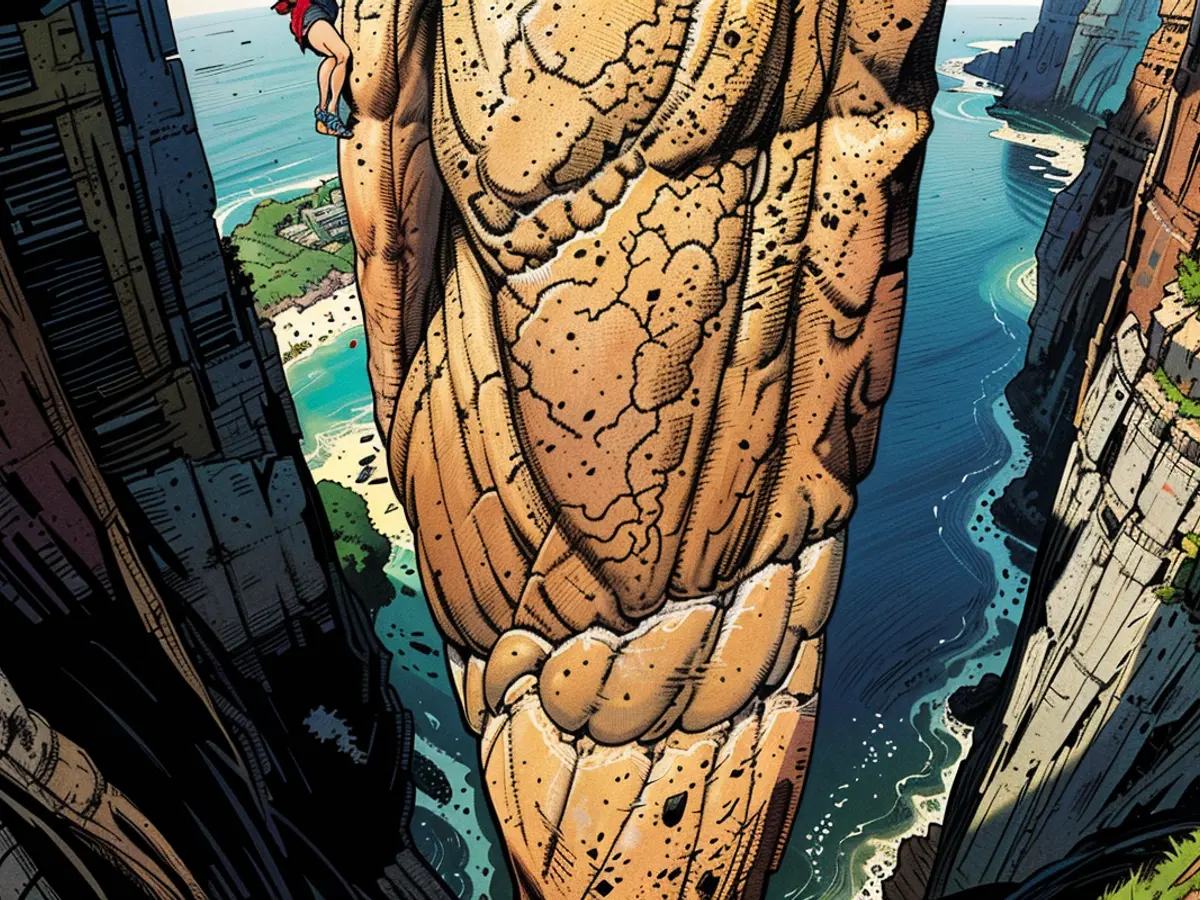
“I like to talk about climbing photography being on a spectrum. On one end you’ve got a very documentary style, where you go out and document whatever it is that’s going on,” said Carter in a video interview.
“And at the other end of the spectrum, you got more conceptual kind of shots, which are the ones I really love — my book’s a mixture of them, but I really love conceptual ones.”
The book divides his shots into thematic chapters with names like “Flow” (featuring climbers completely absorbed in the moment) and “Lines” (showing people tackling vertical crevices and natural cracks in rock faces). The photos also range in composition and proximity to the climber.

Carter uses the sweeping vistas of his locations to highlight the sheer scale of the task facing his subjects. He often shoots them while at great heights himself: Take the shot of climber Monique Forestier hanging off a cliff edge in Australia’s Blue Mountains, which he captured after abseiling just a few feet below her.
On the other hand, his more intimate images — ones where the climbers’ expressions are in sharp focus — reveal just how intense and challenging the ascents can be.
Climbing the career ladder
Carter’s passion for photography began at the age of 15, preceding his love of climbing. The two interests merged, nearly a decade later, into a more serious pursuit.
“In the 1990s, if you wanted to be a good climber in Australia, you’d go and live at Mount Arapiles (a popular climbing destination in western Victoria, Australia)... in a tent and just climb full-time,” said Carter, who for eight months did just that.
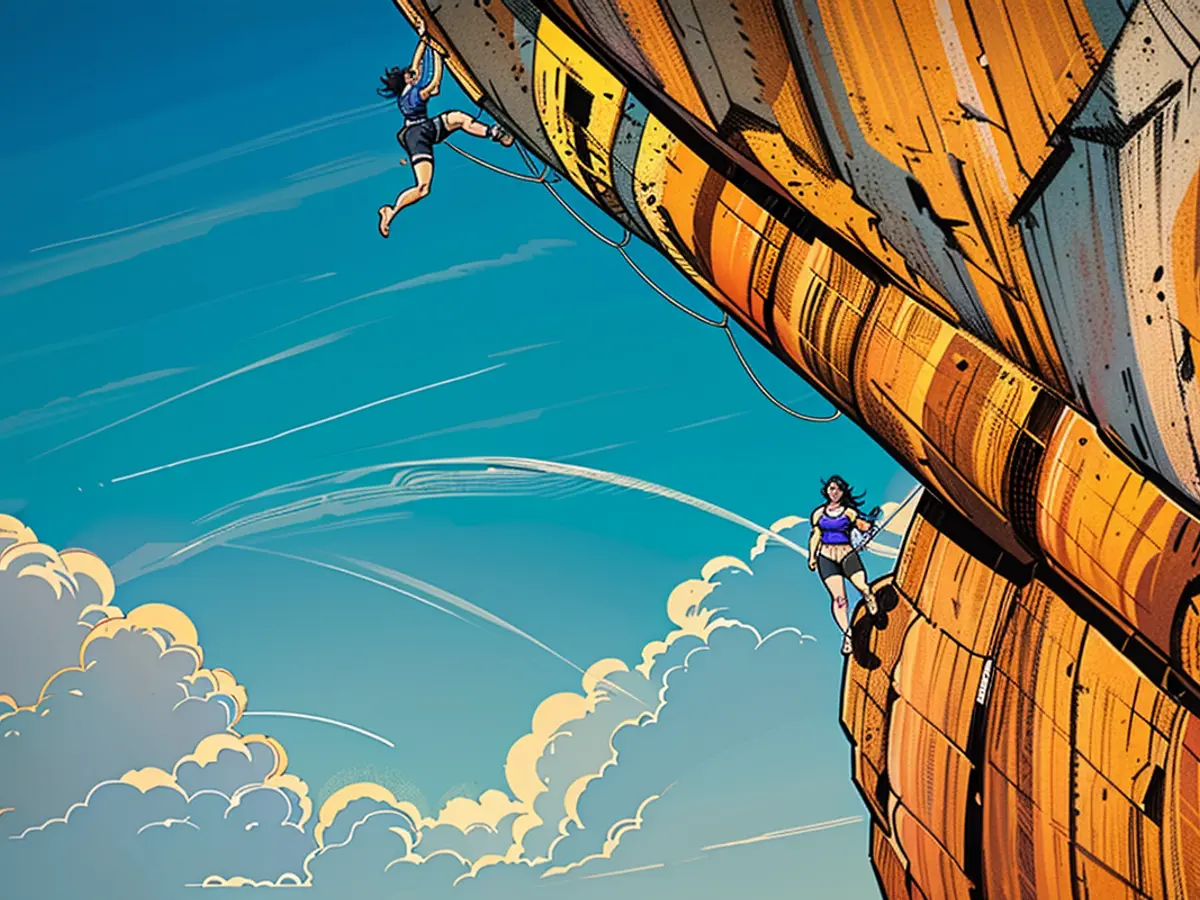
“On my rest days, I started photographing my friends who were doing really incredible things in rock climbing — like some of the best climbers in the country — on these really spectacular cliffs,” he recalled.
In 1994, Carter set up a photography and publishing business that produced a popular climbing calendar, among much else. In the 30 years since it launched, he has witnessed an explosion in the number of people pursuing climbing photography, thanks in part to the internet and the availability of digital cameras. But he worries about the dangers facing this new generation of photographers.
“A lot of them haven’t got a lot of experience in climbing and rigging and what’s going on on a cliff,” he said. “So, one bit of advice I really like to give when I’m asked is: Get experience climbing before you try and add photography into the mix.
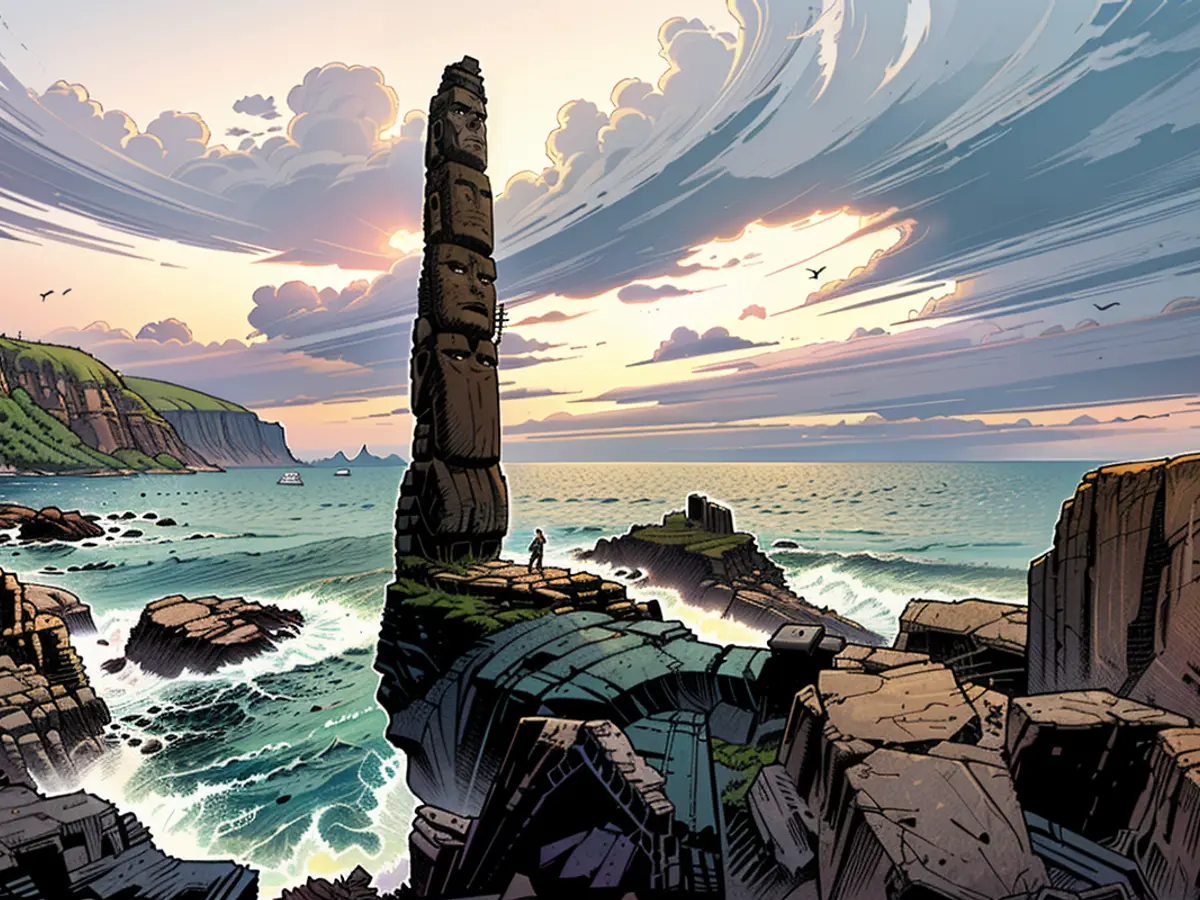
“If you’re too scared or not comfortable in that environment, you’re not going to be able to nail very good shots; you’re not going to be able to ... keep up with the pace or get in position.”
Getting into position for a shot is one of the biggest challenges Carter has faced. “So often you’ve got this sort of hypothetical position you want to be in. And it’s often out in space, out from the cliff a little bit, because you might want to show more (of) the climb and the rock architecture, and the setting.”
The difficulty of reaching the right spot, which may sometimes mean shifting just a few meters, is compounded by having to set up complicated rigs with ropes and other gear, Carter added.

For the most part, Carter’s images in “The Art of Climbing” reflect this process. Rather than reacting to a particular moment, the photographer’s carefully composed shots account for the environment, the emotions of the climb and more technical aspects, like lighting and framing.
One of Carter’s favorite shots is testament to this. It was taken during a temperature inversion (a phenomenon that occurs when air near the ground cools quicker than that above it, creating a layer of cloud), which forms a stunning backdrop for a climber as he scales a wall.
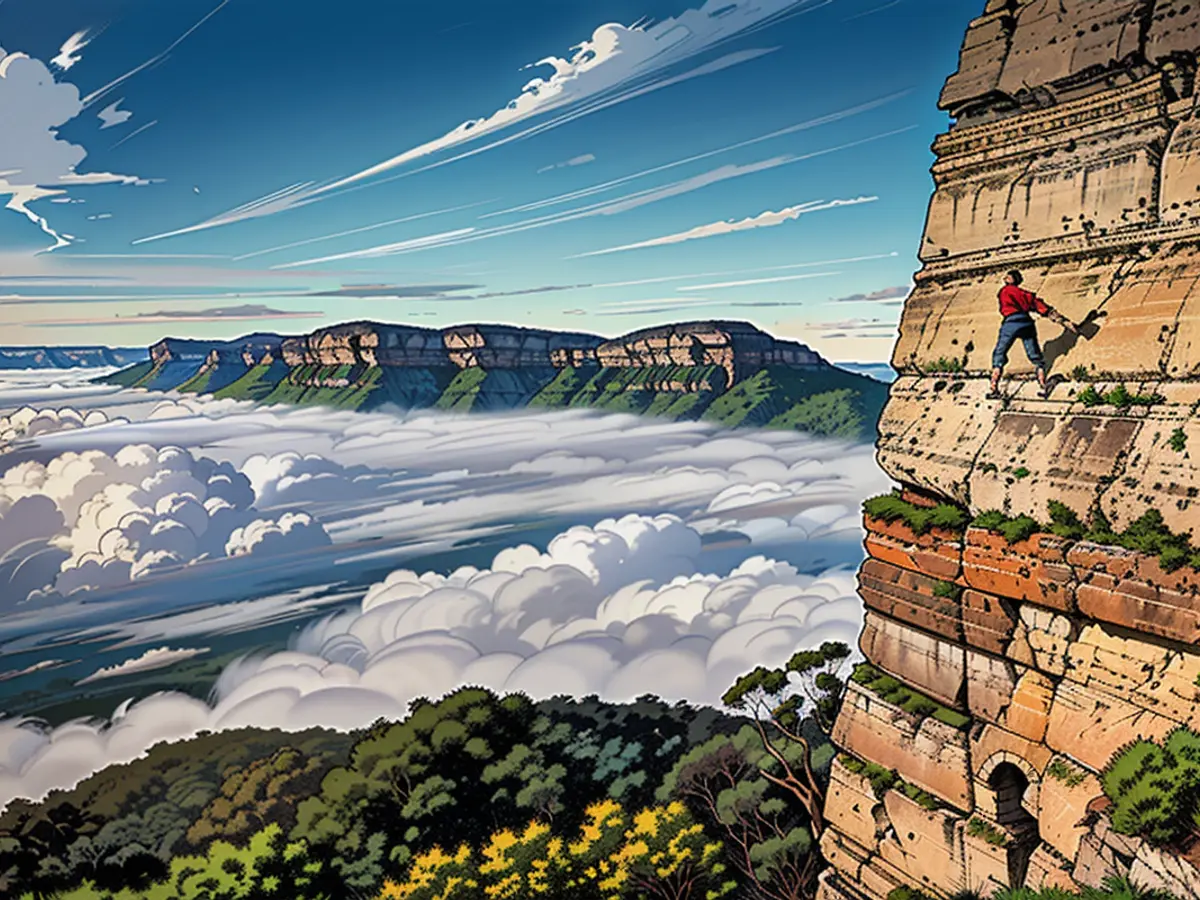
Carter said he enjoyed the process of selecting images for the book, which he hopes are accessible for everyone, climbers and non-climbers alike.
“Having spent 30 years photographing, putting these photos together... was, to me, the icing on the cake.”
“The Art of Climbing,” published by Thames & Hudson, is available now.
The photographer's artistic approach to climbing photography includes both documentary-style images and more conceptual, conceptual shots. In his new book, "The Art of Climbing," Carter presents a mixture of these styles, categorizing his shots into thematic chapters.
Carter's passion for photography and climbing led him to capture his friends climbing at Mount Arapiles in the 1990s, which eventually led to the establishment of his photography and publishing business.
